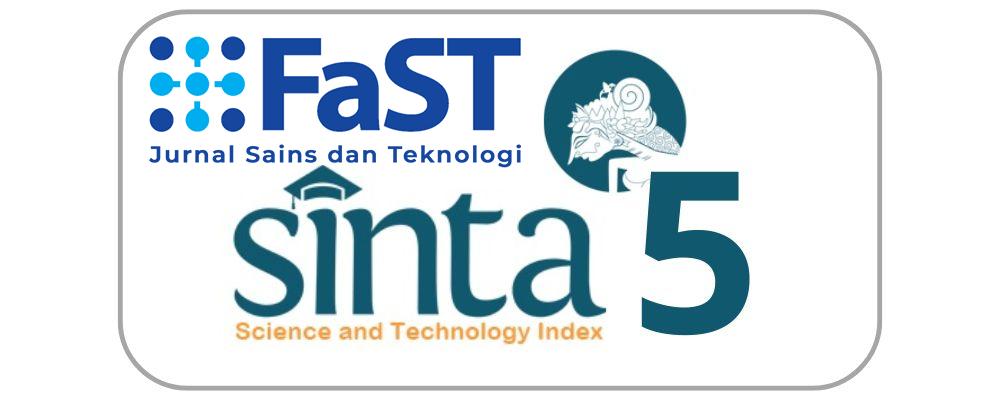OPTIMASI FORMULA KAPSUL EKSTRAK ETANOL DAUN PEPAYA JEPANG Chindoscolus aconitifolius (Mill) I.M.Johnst. [OPTIMIZATION OF THE CAPSULE FORMULA OF JAPANESE PAPAYA LEAF Chindoscolus aconitifolius (Mill.) I.M. Johnst. ETHANOL EXTRACT]
DOI:
https://doi.org/10.19166/jstfast.v6i2.6102Keywords:
Japanese papaya leaf, maltodextrin, microcrystalline cellulose PH 102Abstract
Japanese papaya leaves, known as Chindoscolus aconitifolius, are usually used as a food source. The 96% ethanol extract of Japanese papaya leaves has a high content of phenolic compounds and can potentially act as an antihyperlipidemic agent in the blood. This study aimed to optimize the capsule formula of Japanese papaya leaf ethanol extract. The research was conducted by extracting Japanese papaya leaves using 96% ethanol to obtain dry extract. The extract obtained was known to be hygroscopic so it was necessary to add filler to the formula. The filler used was microcrystalline cellulose PH 102 with maltodextrin which acts as a variation of filler in the formula. The capsule preparation formula consisted of F1 and F2; before being made, the formula preparation was evaluated and the evaluation consisted of powder, preparation, and stability. The results obtained from the flow time test showed that the F1 had a flow time of 7 g/s and F2 of 3,5 g/s. The angle of repose test for F1 was 36.50o and F2 37.95o. The compressibility test value of F1 was 9.4% and F2 was 20%. The value of the disintegration time test for F1 was 6.5 minutes and F2 was 9.25 minutes. Moisture content test value for F1 was 6.3% and F2 was 8.7%. Based on the values obtained, the evaluation results of F1 and F2 met the requirements and it can be said that these two formulas are good.
Bahasa Indonesia Abstract:
Daun pepaya jepang memiliki nama lain Chindoscolus aconitifolius biasa dimanfaatkan sebagai salah satu sumber pangan. Ekstrak etanol 96% daun pepaya jepang memiliki kandungan senyawa fenolik yang tinggi dan dapat berpotensi sebagai antihiperlipidemia dalam darah. Pengujian ini dilakukan untuk mengoptimalisasikan formula kapsul ekstrak etanol daun pepaya jepang. Penelitian dilakukan dengan mengekstraksi daun pepaya jepang menggunakan etanol 96% hingga diperoleh ekstrak kering. Ekstrak yang diperoleh diketahui bersifat higroskopis sehingga diperlukan penambahan filler yang terdapat dalam formula, filler yang digunakan adalah microcrystalline cellulose PH 102 dengan maltodextrin yang berperan sebagai variasi pengisi di dalam formula. Formula sediaan kapsul terdiri dari F1 dan F2, sebelum dibuat sediaan formula dievaluasi terlebih dahulu, evaluasi terdiri dari serbuk, sediaan, dan stabilitas. Hasil yang diperoleh dari uji waktu alir adalah F1 memiliki waktu alir 7 g/s dan F2 sebesar 3,5 g/s. Nilai uji sudut istirahat F1 sebesar 36,50o dan F2 sebesar 37,95o. Nilai uji kompresibilitas F1 sebesar 9,4% dan F2 sebesar 20%. Nilai uji waktu hancur F1 sebesar 6,5 menit dan F2 sebesar 9,25 menit. Nilai uji Kadar air untuk F1 sebesar 6,3% dan F2 sebesar 8.7%. Berdasarkan nilai yang diperoleh F1 dan F2 memiliki hasil evaluasi yang memenuhi persyaratan dan dapat dikatakan kedua formula ini baik.
References
Aulton, M. E. (1988). Pharmaceutics: The science of dosage form design. Churchill Livingstone.
Bolhuis, G. K., & Armstrong, N. A. (2006). Excipients for direct compaction - an update. Pharmaceutical Development and Technology, 11, 111-124. https://doi.org/10.1080/10837450500464255
Ditjen POM. (2020). Farmakope Indonesia (6th ed.). Departemen Kesehatan Republik Indonesia.
Harbir, K. (2012). Processing technologies for pharmaceutical tablet: A review International Research Journal of Pharmacy, 3(7), 20-23.
Iswari, R. S., Mubarok, I., & Sasi, F. A. (2020). The potential of Cnidoscolus chayamansa alcoholic leaves extract as hypolipidemia agent. Biosaintifika Journal of Biology & Biology Education, 12(1), 83-89. https://doi.org/10.15294/biosaintifika.v12i1.23687
Kementerian Kesehatan Republik Indonesia. (2017). Farmakope erbal Indonesia. Kementerian Kesehatan Republik Indonesia.
Omotoso, A. E., Olorunfemi, E. O., & Mikailu, S. (2018). Phytochemical analysis of Cnidoscolus aconitifolius (Euphorbiaceae) leaf with spectrometric techniques. Nigerian Journal of Pharmaceutical and Applied Science Research, 3(1), 38-49.
Panghal, A., Shaji, A. O., Sajitharan D., Nain K., Garg M. K., & Chhikara C. (2021). Cnidoscolus aconitifolius: Nutritional, phytochemical composition and health benefits - A review. Bioactive Compounds in Health and Disease, 4(11), 260-286. https://www.doi.org/10.31989/bchd.v4i11.865
Sari, S. N., Prastiwi, R., & Hayati, H. (2022). Studi farmakognosi, fitokimia dan aktivitas farmakologi tanaman pepaya jepang (Cnidoscolus aconitifolius (Mill.) I. M. Johnston). Farmasains: Jurnal Ilmiah Ilmu Kefarmasian, 9(1), 1-15.
Siregar, C. J. P., & Wikarsa, S. (2010). Teknologi Farmasi Sediaan Tablet. Penerbit Buku Kedokteran EGC.
Downloads
Published
Issue
Section
License
“Authors who publish with this journal agree to the following terms:
1) Authors retain copyright and grant the journal right of first publication with the work simultaneously licensed under a Creative Commons Attribution License (CC-BY-SA 4.0) that allows others to share the work with an acknowledgement of the work's authorship and initial publication in this journal.
2) Authors are able to enter into separate, additional contractual arrangements for the non-exclusive distribution of the journal's published version of the work (e.g., post it to an institutional repository or publish it in a book), with an acknowledgement of its initial publication in this journal.
3) Authors are permitted and encouraged to post their work online (e.g., in institutional repositories or on their website). The final published PDF should be used and bibliographic details that credit the publication in this journal should be included.”





